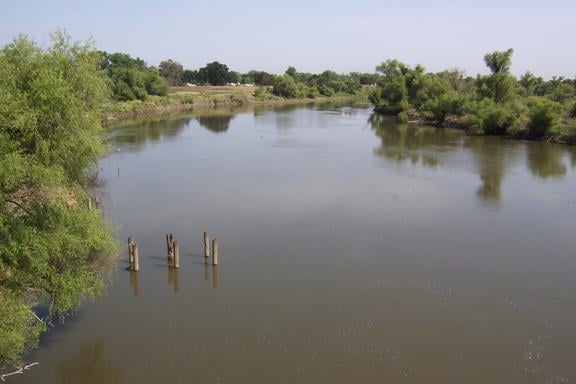There is a chill in the air. The smog in it – the air – is fading.
Not because of diminishing daylight but, presumably, on account of lower ambient levels of heat. That could change; Monday in Fresno is forecasted to be 91 degrees.
Parents picking up their children from schools in air-conditioned automobiles are reminded to not have motor vehicle engines idling when waiting for their kids to exit said campuses.
Smog in the San Joaquin Valley this smog season – whatever the reason(s) – has been troublesome. Could the impacts connected to a warming planet be to blame? Or, maybe, more realistically, it is the uptick in driving that’s, well, driven this. Valley motorists travel over 100 million miles per day.
This break from smog is most welcome. Point: Cleaner air to breathe, bluer skies to see, more comfortable outdoor temperatures to enjoy. Counterpoint: Summer was far less kind.
How much less kind?

Well, in Fresno County, the portion that lies in the Valley at least, a total of, count ‘em, 43 days of unhealthy air forecasted since Apr. 23rd. And, forecasted as well, eight borderline moderate/unhealthy for sensitive groups days. Air Quality Indexes ranged from a low of 101 during the unhealthy air episodes to a high of 150, respectively, the lower and upper limits in the unhealthy for sensitive groups range. The two 150 AQI forecasts were on consecutive days – Aug. 15th and 16th. High temperatures, meanwhile, forecasted for the days with air in the unhealthy for sensitive groups range, ranged from a low of 91 to a high of 107 degrees. And, guess which two days where temperature was forecasted to be that high? Not surprisingly, the same two – Aug. 15th and Aug. 16th.
It’s good that those days are behind. Until wintertime, more auspicious – and more – days with Air Quality Indexes in the more healthful ranges ahead, hopefully.
Now, 43 days of predicted bad air quality linked to smog in the grand scheme of things, may not sound like a lot. But considering the length of the smog season in the Valley (over a period of more or less, 180 days), then 48 either bad- or borderline-unhealthy-for-sensitive- groups air days is not exactly nothing to sneeze at. And, if ever there were a time to do all one possibly could to contribute as little as possible to an already poor air-quality situation negative-environmental-footprint-imprint-wise in the Valley especially, that would be one of the two times of the year to do it.
Right away, some residents may proclaim “a lot easier said than done!”
Those high temps, it is commonly known, occur mid- to late-afternoons, the times during weekdays when kids get out of school and when a good many parents are picking up such. During such times, it is tempting to run those automobile air conditioners, which translates into motor vehicle engine idling. Likewise, for home air conditioning and other types of interior cooling systems, such as those of the evaporative-cooling-system variety, for example – it is tempting to run those also.
Okay, so if running the car air conditioner is a must, then, if added driving can be avoided as a way to compensate (balance things out, in other words), such a plan could be put into action. In addition, avoiding hard braking and quick accelerations could be even more air-beneficial.
Late summer is typically a time in the Valley when colleges and universities get back in session and outdoor sports programs are back in force. Starting times for those practices tend to coincide with times when daytime temperatures are at their highest which could, as well, mean higher daytime smog levels. Light to moderate workout sessions could be implemented in place of rigorous practice sessions if these must be held.
For those who are tasked with keeping residential and commercial lawns trimmed, if they have them, they might consider exchanging gas-powered lawn mowers and edgers and hedge trimmers for rechargeable battery electric models. Blower use could be supplanted with broom and dustpan use.
Actually, making these practices routine can go a long way toward not making air worse independent of the time of year and quality of air.
The fall: A time to relish the niceties that Mother Nature serves up this time of the year in California’s vast interior region; that is, before fine particulate pollution takes over during late autumn and wintertime and becomes the dominant pollutant of concern: A time and condition that will be present in the Valley all too soon.
For right now, here is to capitalizing on the opportunity (while it lasts) to breathe cleaner Valley air and for that extra special something for all of those who care to indulge, to use an idiom, smell the roses.

Image (upper): United States Geological Survey
This post was last revised on Dec. 25, 2020 @ 9:37 p.m. Pacific Standard Time.
– Alan Kandel
Great advice to use brooms and dustpans instead of “leaf” bowers. We all know leaf blowers are used year-round to just blow dust, more than leaves, from one one place to another.